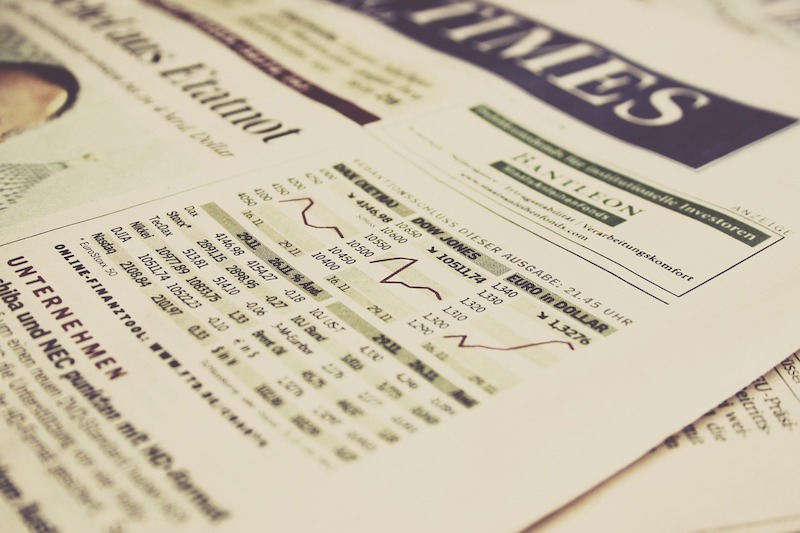Why the Dow Jones Is Misleading


The Dow Jones is one of the most popular global equity benchmarks, dating back to the mid-1880s as a daily bulletin and 1896 in terms of its formal introduction as the Dow Jones Industrial Average (DJIA).
The S&P 500 came around in 1957 and the more tech-themed NASDAQ in 1971.
Yet as a point of reference, the Dow Jones is fundamentally different. Rather than a market capitalization-weighted index, the Dow Jones is price-weighted.
In other words, the valuations of the S&P 500 and NASDAQ are weighted based on the size of the company (size meaning market cap).
This is a good way of doing things to get at a reasonable representation of their economic contribution relative to the index as a whole.
In other words, if you take the market cap of one company and divide by all the market caps of all companies within the index, you’ll get its particular weighting. The sum of all the relative weightings represents the value of the index.
The Dow Jones, however, is uniquely weighted based on share price.
In other words, if a company splits its stock 10-to-1, its weighting in the index will go down by a factor of 10.
How a stock is split has nothing to do with a company’s value. It simply breaks the company’s public ownership up into more purchasable fractions.
Usually stock splits are done to better diversify the shareholder base.
When a stock is $100 instead of $1,000 per share, it becomes more affordable to more individual investors (even in an era of widespread fractional share trading).
It also makes it more liquid. At a lower per-share price, more shares can be traded on a daily basis. It also means options contracts become more affordable for certain investors and therefore also more liquid.
On August 31, 2020 Apple split its stock 4-to-1. This has no impact on Apple’s value.
But in the 30-stock Dow index, it moved the stock from the highest weighted company in the index to the 16th highest weighted. (In the S&P 500 it remained the highest weighted.)
This means Apple will no longer move the index as much and the Dow will need to rely more on other companies. At the time of its split, it was up over 50 percent year-to-date.
IBM’s unique historical influence on the Dow’s valuation
Apple’s lesser contribution to the Dow going forward will likely represent a drop in the bucket compared to IBM’s exclusion and later re-inclusion.
IBM was removed from the Dow in 1939 to make way for telecom giant AT&T.
In June 1979, it was re-entered to replace a struggling Chrysler.
Over those 40 years, the Dow rose from 151 to 841, or a 5.6x return (4.4 percent annualized).
IBM becoming one of the world’s top tech giants in the 1960s and 1970s.
Had IBM not been replaced, the index would have risen to 23,580, or a 156x return (13.4 percent annualized).
It didn’t officially reach the 23,580 level until 38 years later in 2017.
Without the quirk of IBM’s temporary absence, the Dow, with its 8.8 percent annualized returns since, would be worth around 770,000. One thousand-point moves would be a mere 0.01 percent change rather than the three-ish percent changes they are today.
Other Impacts of Stock Splits on the Dow Jones
Because of the price weighted structure of the Dow, stock splits can change the sectoral composition of the index.
Apple’s stock split reduced the Dow’s tech representation. Stock indices are commonly thought of as a barometer of an entire economy. Accordingly, the committees in charge of them want the sectoral weights to remain roughly on par over time.
With Apple’s stock split, that meant the Dow’s tech weight was reduced materially and the index had to reshuffle its components.
Oil conglomerate Exxon Mobil (XOM), which had been the longest tenured of the 30 Dow companies, was thrown out of the index. Drugmaker Pfizer (PFE) and defense company Raytheon Technologies (RTX) were also taken out.
Software provider Salesforce.com (CRM) was moved in. Honeywell International (HON) and biotech company Amgen (AMGN) also got the nod for Dow inclusion.
Because of passive flows associated with money going into Dow Jones-related ETFs and futures contracts, the shifts had implications for each company’s share price.
Exxon lost 3.2 percent while Pfizer and Raytheon lost 1.1 and 1.5 percent, respectively.
Salesforce.com gained 3.6 percent while Honeywell, and Amgen gained 3.2 and 5.4 percent, respectively.